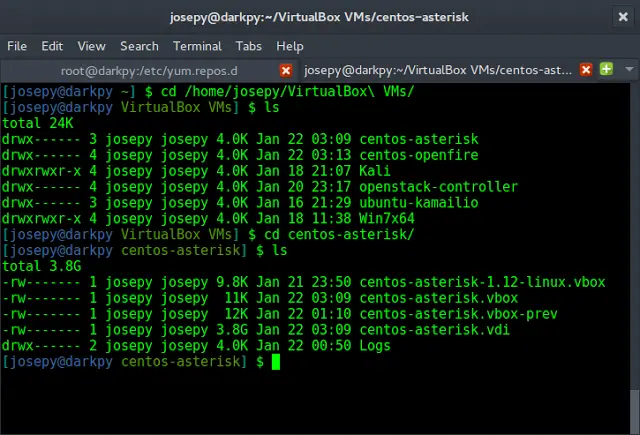Python string library doesn’t support the in-built “reverse()” as done by other python containers like list, hence knowing other methods to reverse string can prove to be useful. This article discusses several ways to achieve it in Python.
Example:
Input: GeeksforLazyroar
Output: skeegrofskeeG
Reverse a string in Python using a loop
In this example, we call a function to reverse a string, which iterates to every element and intelligently joins each character in the beginning so as to obtain the reversed string.
Time complexity: O(n)
Auxiliary Space: O(1)
Implementation:
Python3
def reverse(s): str = "" for i in s: str = i + str return strs = "GeeksforLazyroar"print("The original string is : ", end="")print(s)print("The reversed string(using loops) is : ", end="")print(reverse(s)) |
The original string is : GeeksforLazyroar The reversed string(using loops) is : skeegrofskeeG
Reverse a string in Python using recursion
The string is passed as an argument to a recursive function to reverse the string. In the function, the base condition is that if the length of the string is equal to 0, the string is returned. If not equal to 0, the reverse function is recursively called to slice the part of the string except the first character and concatenate the first character to the end of the sliced string. ‘
Implementation:
Python3
def reverse(s): if len(s) == 0: return s else: return reverse(s[1:]) + s[0]s = "GeeksforLazyroar"print("The original string is : ", end="")print(s)print("The reversed string(using recursion) is : ", end="")print(reverse(s)) |
The original string is : GeeksforLazyroar The reversed string(using recursion) is : skeegrofskeeG
Time complexity: O(n), for recursion to reverse
Auxiliary Space: O(n), for recursion call stack
Reverse string in Python using stack
An empty stack is created. One by one character of the string is pushed to the stack. One by one all characters from the stack are popped and put back to a string.
Time complexity: O(n)
Auxiliary Space: O(n)
Implementation:
Python3
# Function to create an empty stack. It# initializes size of stack as 0def createStack(): stack = [] return stack# Function to determine the size of the stackdef size(stack): return len(stack)# Stack is empty if the size is 0def isEmpty(stack): if size(stack) == 0: return true# Function to add an item to stack . It# increases size by 1def push(stack, item): stack.append(item)# Function to remove an item from stack.# It decreases size by 1def pop(stack): if isEmpty(stack): return return stack.pop()# A stack based function to reverse a stringdef reverse(string): n = len(string) # Create a empty stack stack = createStack() # Push all characters of string to stack for i in range(0, n, 1): push(stack, string[i]) # Making the string empty since all # characters are saved in stack string = "" # Pop all characters of string and put # them back to string for i in range(0, n, 1): string += pop(stack) return string# Driver codes = "GeeksforLazyroar"print("The original string is : ", end="")print(s)print("The reversed string(using stack) is : ", end="")print(reverse(s)) |
The original string is : GeeksforLazyroar The reversed string(using stack) is : skeegrofskeeG
Reverse string in Python using an extended slice
Extended slice offers to put a “step” field as [start, stop, step], and giving no field as start and stop indicates default to 0 and string length respectively, and “-1” denotes starting from the end and stop at the start, hence reversing a string.
Time complexity: O(n)
Auxiliary Space: O(1)
Implementation:
Python3
# Function to reverse a stringdef reverse(string): string = string[::-1] return strings = "GeeksforLazyroar"print("The original string is : ", end="")print(s)print("The reversed string(using extended slice syntax) is : ", end="")print(reverse(s)) |
The original string is : GeeksforLazyroar The reversed string(using extended slice syntax) is : skeegrofskeeG
Reverse string in Python using reversed() method
The reversed() returns the reversed iterator of the given string and then its elements are joined empty string separated using join(). And reversed order string is formed.
Time complexity: O(n)
Auxiliary Space: O(n)
Implementation:
Python3
# Python code to reverse a string# using reversed()# Function to reverse a stringdef reverse(string): string = "".join(reversed(string)) return strings = "GeeksforLazyroar"print("The original string is : ", end="")print(s)print("The reversed string(using reversed) is : ", end="")print(reverse(s)) |
The original string is : GeeksforLazyroar The reversed string(using reversed) is : skeegrofskeeG
Reverse string in Python using list comprehension()
List comprehension creates the list of elements of a string in reverse order and then its elements are joined using join(). And reversed order string is formed.
Time complexity: O(n)
Auxiliary Space: O(1)
Implementation:
Python3
# Function to reverse a stringdef reverse(string): string = [string[i] for i in range(len(string)-1, -1, -1)] return "".join(string)s = "GeeksforLazyroar"print("The original string is : ", s)print("The reversed string(using reversed) is : ", reverse(s)) |
The original string is : GeeksforLazyroar The reversed string(using reversed) is : skeegrofskeeG
Reverse string in Python using the function call
Function to reverse a string by converting string to list then reversed it and again convert it to string.
Time complexity: O(n)
Auxiliary Space: O(1)
Implementation:
Python3
# Function to reverse a string# by converting string to list# then reversed it and again convert it to stringdef reverse(string): string = list(string) string.reverse() return "".join(string)s = "GeeksforLazyroar"print("The original string is : ", s)print("The reversed string(using reversed) is : ", reverse(s))# This code is contributed by Susobhan AKhuli |
The original string is : GeeksforLazyroar The reversed string(using reversed) is : skeegrofskeeG




